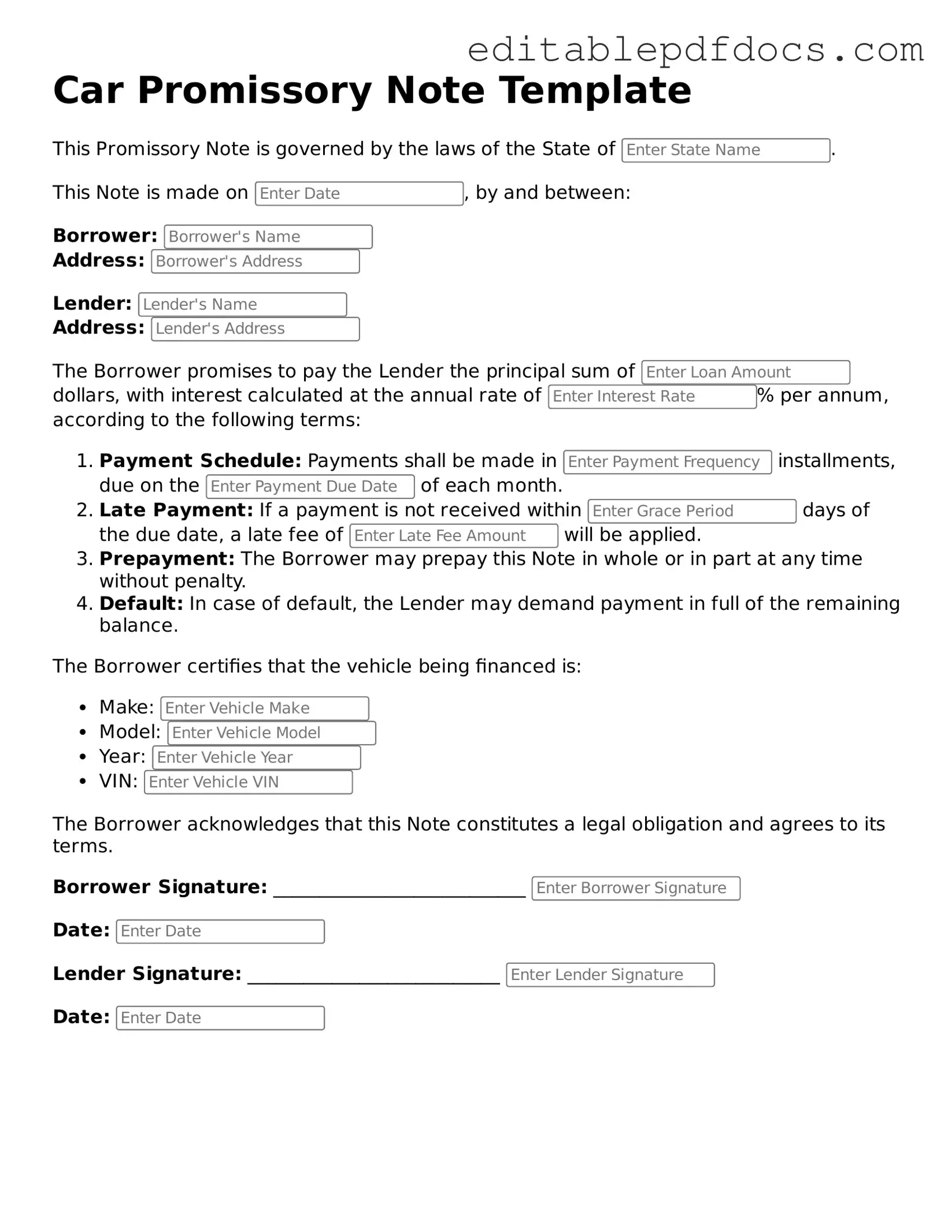Filling out a Promissory Note for a car can seem straightforward, but many people make common mistakes that can lead to complications later. One frequent error is not providing complete information. Every field on the form should be filled out accurately. Leaving out details like the full names of the parties involved or the car's Vehicle Identification Number (VIN) can create confusion and may even invalidate the agreement.
Another mistake is using incorrect dates. The date of the agreement is crucial. If you mistakenly enter the wrong date, it could affect the enforcement of the note. Always double-check that the date reflects when the agreement was made.
Many individuals also overlook the importance of specifying the loan amount clearly. This number should be precise and match any verbal agreements made. Ambiguity in the loan amount can lead to disputes down the line, making it essential to write this figure clearly and accurately.
Additionally, people often forget to include the interest rate. If the loan is not interest-free, failing to state the interest rate can lead to misunderstandings. It’s important to outline whether the rate is fixed or variable and how it will be calculated.
Another common issue is not detailing the payment schedule. A vague payment plan can lead to confusion about when payments are due and how much should be paid each time. Clearly stating the due dates and the amount of each payment helps avoid potential disputes.
Some individuals also neglect to include the consequences of default. It’s vital to outline what happens if the borrower fails to make payments. This section protects both parties and provides clarity on the next steps if issues arise.
People sometimes fail to sign the document properly. A Promissory Note is not valid without the signatures of both parties. Ensure that all required signatures are present and that they are dated correctly.
Another mistake is not keeping copies of the signed document. After filling out the form, both parties should retain a copy for their records. This can be crucial if any disagreements occur in the future.
Finally, some individuals do not seek legal advice when needed. If the terms of the loan are complex or if large sums are involved, consulting with a legal expert can help ensure that the Promissory Note is fair and legally binding.
